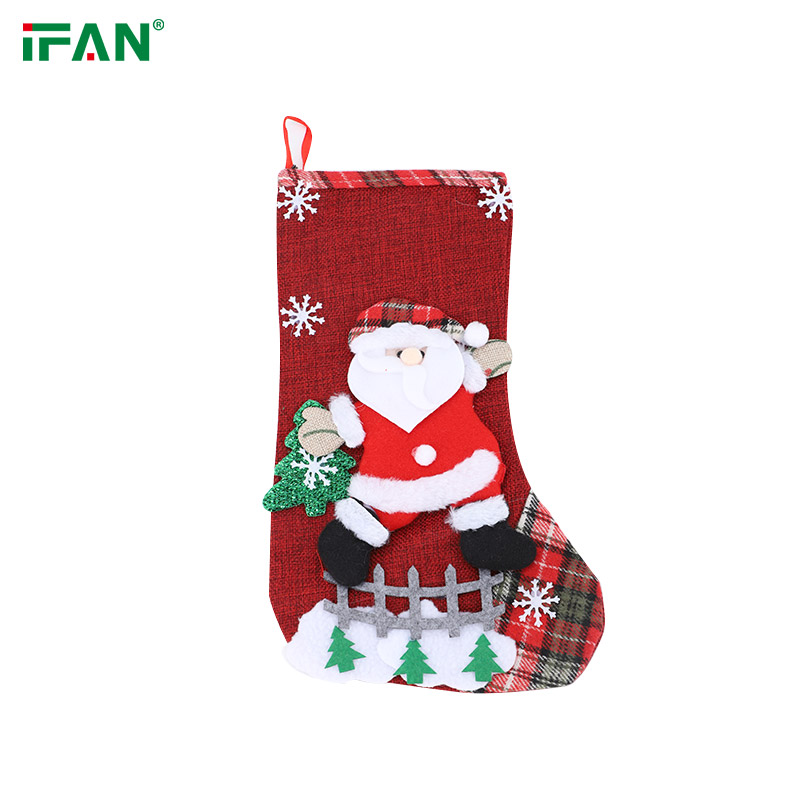The origin of Christmas stockings can be traced back to various legends, historical practices, and cultural customs. While the exact origins are not definitively known, several stories and traditions have contributed to the development of this beloved holiday tradition.
One popular legend dates back to the story of St. Nicholas, a 4th-century Greek bishop known for his generosity and kindness. According to the story, St. Nicholas heard of a poor widower who was unable to provide dowries for his three daughters. Determined to help the family, St. Nicholas set out to bring them some relief. Late at night, he discreetly approached the house and noticed that the stockings of the daughters were hung by the fireplace to dry. Inspired by the idea, St. Nicholas secretly dropped bags of gold coins down the chimney, which landed in the stockings. When the family woke up, they were overjoyed to find the unexpected gifts in their stockings. This act of charity and surprise gift-giving led to the custom of hanging stockings by the fireplace in hopes of receiving gifts during the Christmas season.

Another legend originates from Scandinavian folklore. It is said that children would leave their shoes filled with hay or carrots for Odin’s flying horse on Yule Eve, the winter solstice festival. In return, Odin would replace them with small treats or gifts. Over time, the hay or carrots were replaced with stockings, and the tradition merged with the celebration of Christmas. In countries like Sweden, it is still common for children to put out their shoes on Christmas Eve, hoping to wake up to find them filled with presents.
The tradition of hanging stockings also has ties to the Dutch practice of leaving shoes out on the eve of St. Nicholas’ feast day, December 5th. Sinterklaas, the Dutch version of St. Nicholas, would travel on a white horse named Amerigo and deliver gifts to children who had been good. Children would place their shoes near the fireplace or a window, and it is believed that Sinterklaas would fill them with gifts overnight. As Dutch settlers brought this tradition to America, it blended with the existing practice of hanging stockings, and eventually, stockings became the more common choice for receiving gifts.
The popularity of stockings continued to grow throughout the 19th century. The publication of Clement Clarke Moore’s poem “A Visit from St. Nicholas” (also known as “The Night Before Christmas”) in 1823 further cemented the association of stockings with Santa Claus and Christmas gift-giving. The poem describes St. Nicholas as “a right jolly old elf” who “fill’d all the stockings; then turn’d with a jerk, And laying his finger aside of his nose, And giving a nod, up the chimney he rose.” This depiction of St. Nicholas leaving gifts in stockings captured the imagination of readers and solidified the image of Santa Claus filling stockings as part of the Christmas tradition.
Since then, the tradition of hanging Christmas stockings has become a cherished part of the holiday season in many cultures around the world. Whether they are filled by Santa Claus, St. Nicholas, or loved ones, the anticipation and excitement of waking up on Christmas morning to find stockings filled with surprises has become an integral part of the festive celebrations. It brings joy and a sense of wonder to both children and adults, carrying forward the spirit of giving and spreading holiday cheer.
In addition to the legends and stories, various cultural customs have influenced the use of stockings during Christmas. In some European countries like Germany and France, children leave their shoes out on December 6th, St. Nicholas Day, hoping to receive small gifts or sweets. In other cultures, such as Italy, children hang stockings on Epiphany Eve, January 5th, in anticipation of the arrival of La Befana, a kind-hearted witch who delivers gifts to children. These customs highlight the diverse ways in which stockings are incorporated into holiday traditions.
As the tradition has evolved, stockings have become more than just receptacles for gifts. They have also become symbols of hope, warmth, and the magic of the holiday season. Many families have personalized stockings with each family member’s name or initials, making them unique and special. Stockings can be handcrafted, knitted, or store-bought, and they often reflect the personality and interests of the individual. They can be created with different colors, patterns, and designs, reflecting different themes and styles. Some people prefer traditional red and white stockings, while others opt for more modern or personalized designs.

Stockings are often hung by the fireplace, as it is believed to be the place where Santa Claus or St. Nicholas enters the home to deliver gifts. The act of hanging stockings and eagerly awaiting their filling creates a sense of anticipation and excitement in both children and adults. It adds to the festive atmosphere of the home during the Christmas season.
While stockings are traditionally associated with receiving gifts, they can also be used for acts of kindness and giving back. Many organizations and communities organize sock drives during the holiday season to collect socks and other essential items for those in need. By filling Christmas stockings with small necessities like toiletries, socks, gloves, or even handwritten messages of love and encouragement, people can spread joy and make a positive impact in the lives of others. This reinforces the spirit of generosity and compassion that is central to the Christmas season.
Furthermore, Christmas stockings have inspired creativity and DIY projects. They can be used as materials for various crafts such as making sock puppets, decorative ornaments, or even repurposed into cozy and warm winter accessories like hand warmers or leg warmers. Engaging in these DIY projects can bring the family together, foster creativity, and create cherished memories during the holiday season.
In conclusion, the origin of Christmas stockings is rooted in legends, historical practices, and cultural customs. The stories of St. Nicholas, Odin, and Sinterklaas, along with traditions from various countries, have contributed to the development of this beloved holiday tradition. Whether it be for gift-giving, decoration, acts of kindness, creative projects, or advent calendars, Christmas stockings have become an integral part of the holiday season. They symbolize the joy, anticipation, and magic associated with Christmas, creating lasting memories for families and bringing warmth and happiness to homes around the world.


